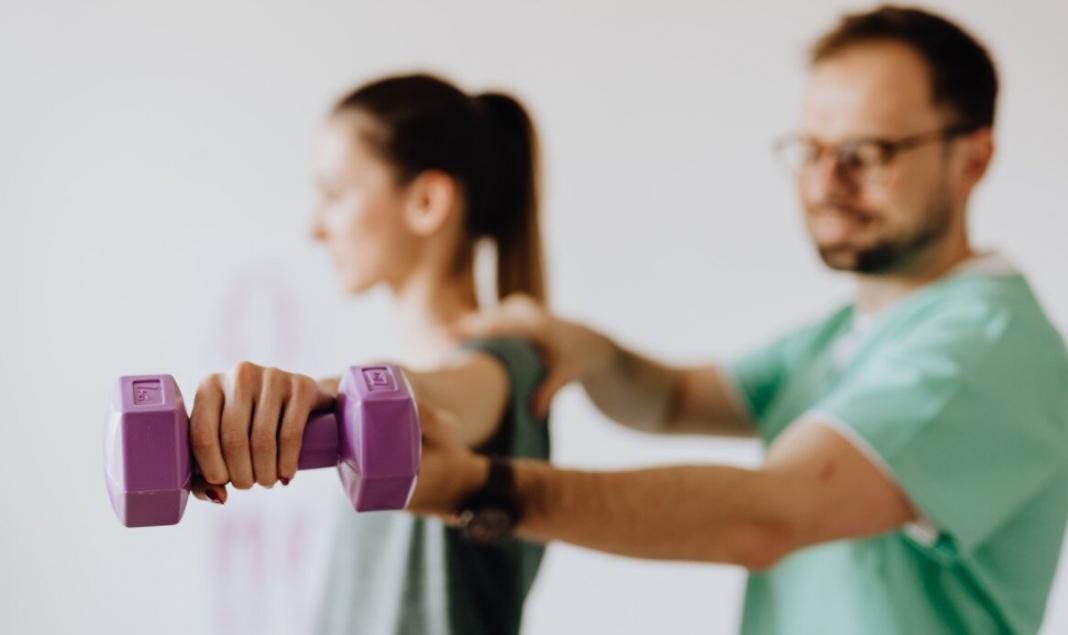Regardless of how hard we try to avoid them when doing sports, injuries still happen. Whether major or minor, they are, nonetheless, a nuisance. Being in pain is never fun, especially if it prevents you from performing your daily activities. The goal is to get over this phase quickly and get back to 100% as soon as possible. While no one can guarantee the recovery process will be smooth, exercise can drastically simplify and shorten it. Many believe this kind of physiotherapy is the key to restoring your body to its previous state. Here’s all you need to know about exercise rehabilitation.
Why is exercise rehabilitation important?
Tissue damage occurs no matter how severe the injury is, and it leads to issues such as muscle loss, weakness, and instability. Despite what some may think, inactivity doesn’t make the problems go away. Quite the contrary, it only worsens them and prolongs the recovery period. On the other hand, being physically active, even on a small scale, can majorly impact the speed at which our bodies deal with the damage. Furthermore, exercise allows us to:
- Regain muscle mass and strength
- Regain mobility
- Improve flexibility
- Improve endurance
- Prevent re-injury
While the benefits of recovery exercises are abundant, their importance remains unfairly neglected. Informing yourself about active rehabilitation is a must. By being knowledgeable and sticking to a professionally-made exercise plan, such as that provided by Dubai Personal Trainers, you will allow your injuries to heal better and faster.
Is active physical therapy really that good?
Indeed it is! Just think about it this way. We know that there are no magic or miracle cures out there, but if there were, the exercise would be it! It’s a proven fact that physical activity is a more effective treatment for chronic pain than, for example, electrical stimulation.
Remember that high you feel after a good sweat session? Well, it’s all thanks to endorphins – the feel-good chemicals our bodies produce that ultimately lower pain and promote well-being. In a way, exercise is a natural pain-killer. With that said, it’s understandable why physiotherapists consider it to be an integral part of the recovery process.
Who are post-injury workouts for?
People of all ages with various injuries can reap the benefits of exercise rehabilitation. It’s an effective treatment for acute and chronic injuries ranging from sprains and strains to tears and fractures. For the best results, start rehabilitation as soon as possible. Or at least after the inflammation has subsided. Early response is your best bet for restoring full function.
What are the stages of exercise-induced rehabilitation?
Active recovery consists of three following stages that are vital for overall recovery:
Early-stage – this one is designed with motion recovery in mind. It includes mild exercises that promote healing and mobility.
Middle stage – the stage during which patients are working on recovering strength. The musculoskeletal system is progressively loaded with the goal of damaged tissue healing.
Late-stage – this is where the full function returns. It consists of numerous drills that test the injured area. Its strength, range of motion, and flexibility are closely examined to ensure the success of recovery.
The exercises included in each of these phases are, typically, painless. While pain is possible in some instances, it could also indicate a more severe problem. If you experience any discomfort while performing these, make sure to update your doctor about it. Medical professionals are the only ones that can differentiate harmless aches from those that could potentially cause further damage.
When dealing with a sports injury, it’s important to remember that, in most cases, easy recovery is possible. Of course, the length of the process will vary from person to person, and it should, in no way, be rushed! Give your body the necessary time to heal before you attempt anything challenging. Or, as some would say, take it easy.
What does the first session of exercise rehabilitation look like?
When you begin exercise rehabilitation, you’ll be assigned a physiotherapist that will guide you through the entire process. They will review the background of your injury and assess your current condition through a physical exam. Once they establish the diagnosis, they will talk to you about the steps you need to take in order to reach full recovery.
Your physiotherapist will estimate the time required for recovery and adjust an exercise regime to suit your individual needs. They may also suggest you combine active physical therapy with massage therapy for better results. Additionally, if you are experiencing severe pain, they will prescribe anti-inflammatory medication.
Are there any side effects of active rehabilitation?
There are no risk-free therapies, and exercise recovery is no exception. Nevertheless, the risks are relatively low, and side effects are usually mild. They are typically limited to muscle soreness. However, the initial injury can slightly take a turn for the worse in rare cases. Experienced physiotherapists know how to recognize the worsening and will put a temporary stop to exercising if need be. They will also explain the risks before starting treatments and advise on how to avoid additional damage.
It’s important to note that you shouldn’t attempt any exercises without an all-clear from your doctor. Just because someone made progress through performing certain activities doesn’t mean the same will happen for you. There are no bodies and injuries that are identical. What is suitable for someone may prove harmful to others.
What kind of attire should you wear during sessions?
You can wear anything you want! However, tight clothes aren’t the best choice as they prevent the full range of motions. Instead, opt for comfortable attire that allows you to move freely in all directions. By doing this, you also give your physiotherapist more freedom in choosing the right exercises for you.
Ultimately, all you need to know about exercise rehabilitation is that this can be an effective way of treating injuries only if you arm yourself with patience and the will to succeed.








I do love the manner in which you have framed this specific problem plus it does indeed present me personally a lot of fodder for thought. However, coming from what I have experienced, I just trust when the feed-back pack on that folks keep on issue and not get started on a soap box associated with some other news du jour. Anyway, thank you for this excellent point and even though I do not agree with it in totality, I regard your standpoint.